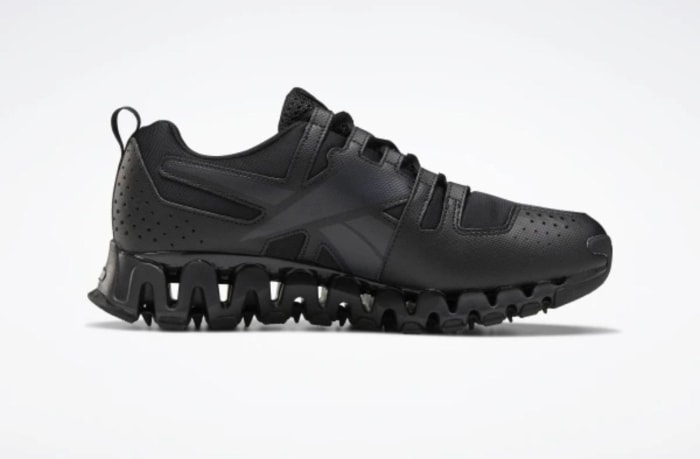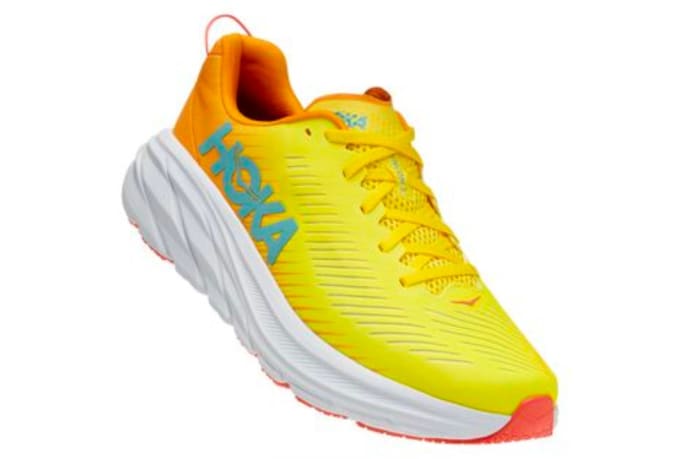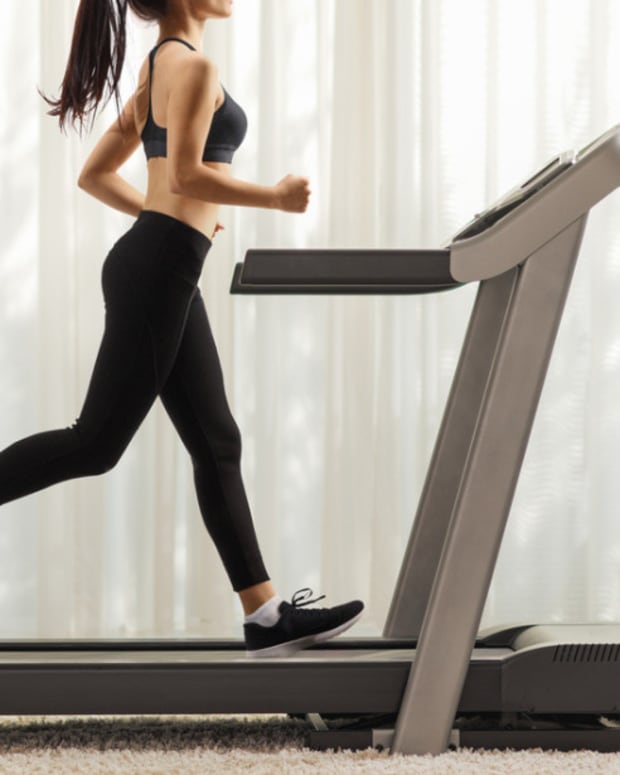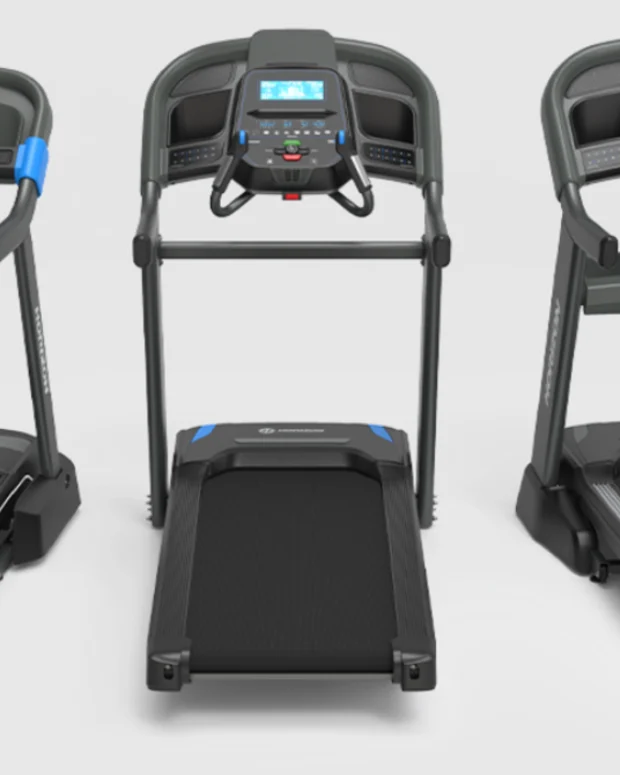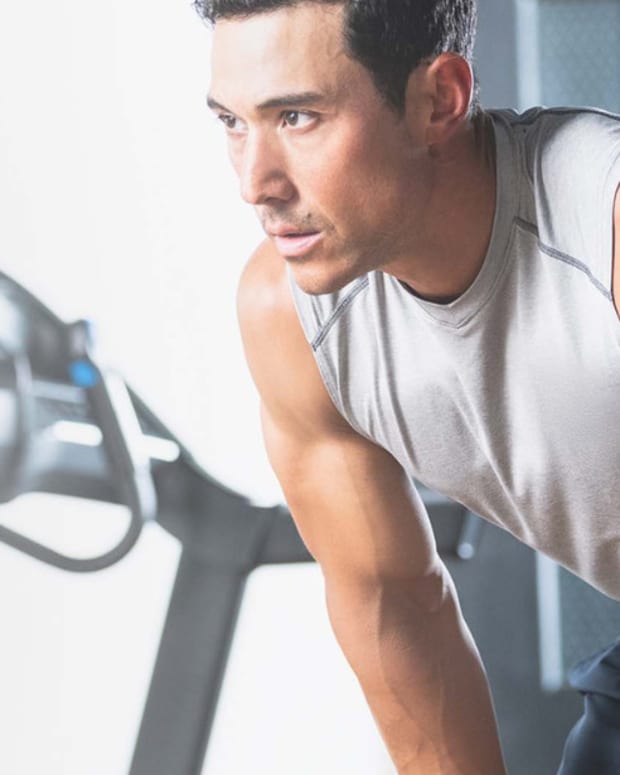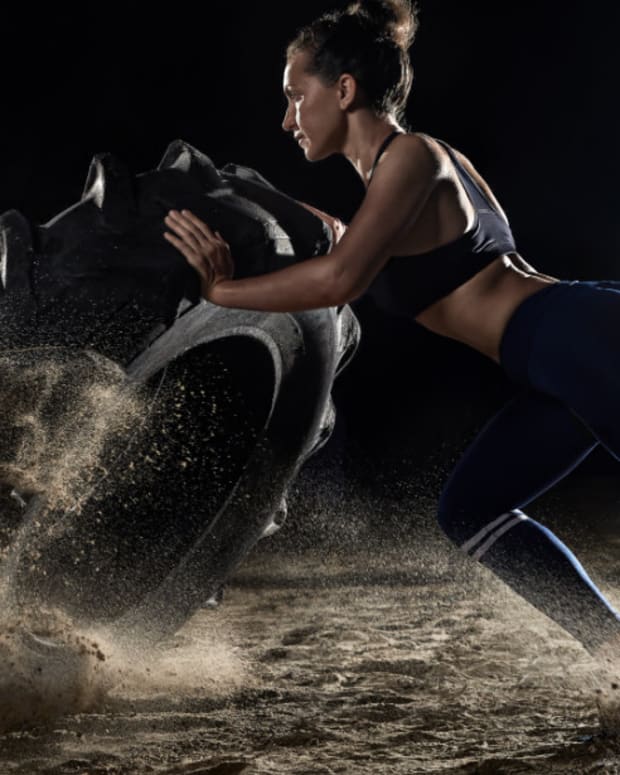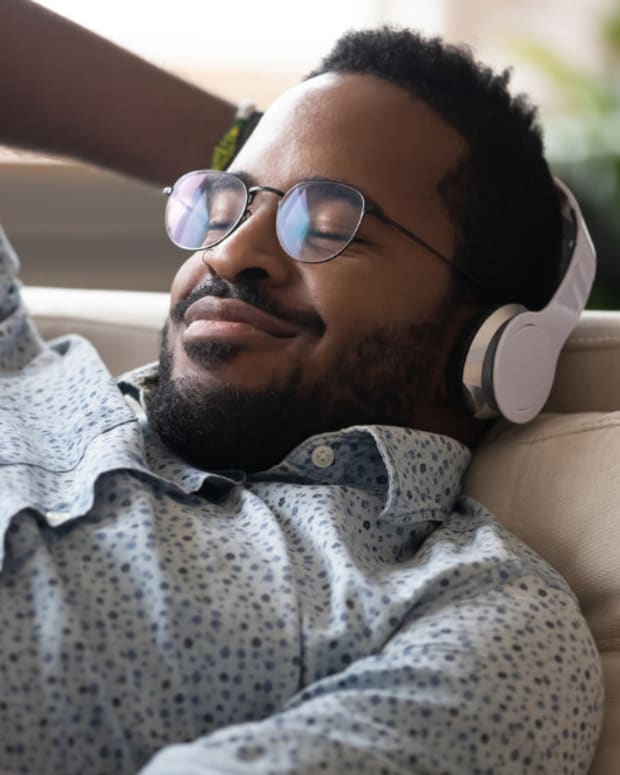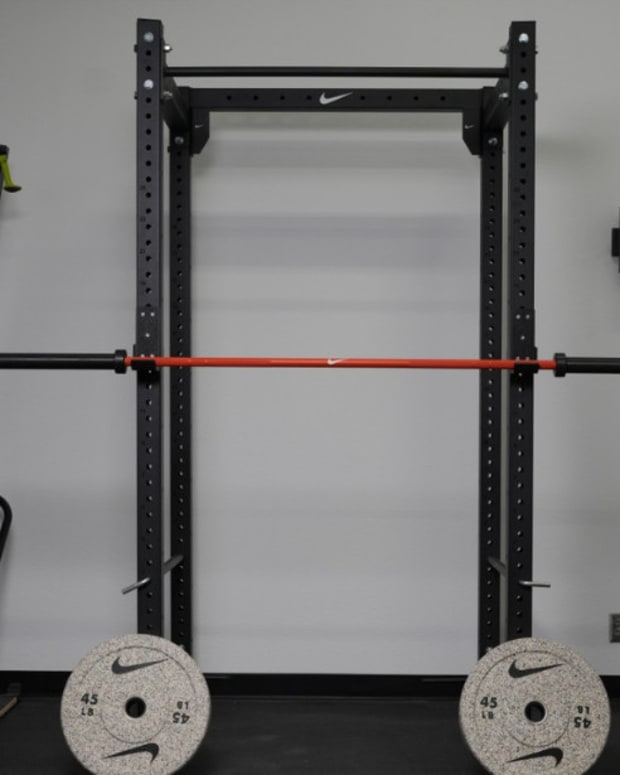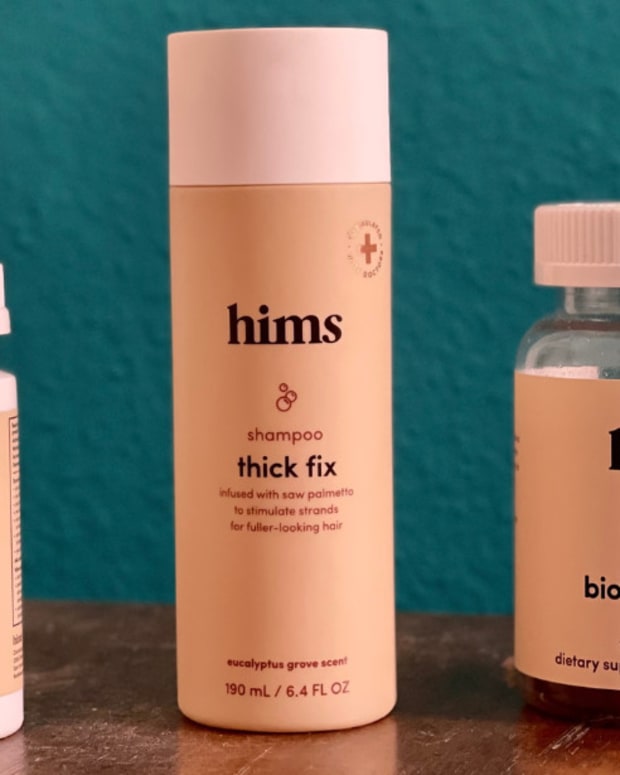The products featured in this article have been independently reviewed. When you buy something through the retail links on this page, we may earn commission at no cost to you, the reader. Sports Illustrated editorial staff are not involved in the creation of this content. Learn more here.
Want to know what makes the best pair of running shoes? A thoughtful and rigorously tested design.
For example, consider two features everyone should look for: durability and support. From the upper and tongue to the toe box and outsole, you’ll want a pair that can take a pounding for miles while protecting your joints and muscles. A quality pair of shoes properly withstands and absorbs the impact of your feet hitting the pavement or trail. It does so by distributing that impact across its structure to minimize the blunt force your body takes. This distribution occurs through foams, cushions and various elements of design. And when done well, the distribution of force can even be used to propel you forward.
It’s also very important to consider the height of your arches, as that can drastically affect your gait, and which shoes will work best for you. People with low arches or flat feet often find that their feet roll inward as they run (this is called overpronation). They’ll benefit from stability shoes or running shoes for flat feet, which help provide additional support through the midsole and into the heel and can prevent injury. (If you’re not sure how high your arches are, or if there are any irregularities in your gait, a physical therapist can help you figure it out.)
Fitness pros often advise that it’s important to evaluate the quality of materials used in the shoe construction to determine how well they will perform.
“When I was working for Nike, Inc., it was my job to educate the general population about different types of running shoes. I always lead people in the direction of shoe technology,” says D'Annette Stephens, ISSA-CPT. “I encourage you to think about functionality (mileage and use), injury protection (ankle support, arch support, cushion) and of course your own personal style! All of these elements will hopefully lead you in the direction of better running performance."
The Best Running Shoes of 2024:
- Best Running Shoe Overall: adidas Ultraboost Light
- Runner-Up: New Balance Fresh Foam X 860v12
- Best Daily Running Shoe: Skechers GOrun Razor 4
- Best Shoe for Shin Splints: Nike Invincible 3
- Best Cushioned Running Shoe: adidas Solarboost 5
- Best Trail Running Shoe: Reebok Zigwild Trail 6
- Best Long-Distance Running Shoe: Brooks Ghost 15
- Best Running Shoe for Speed: Nike Vaporfly 3
- Best Lightweight Running Shoes: Hoka Rincon 3
- Best Value Running Shoe: Reebok Floatride Energy 5
- Best Running Shoe for Women: Saucony Ride 15
- Best Running Shoe for Men: Hoka Clifton 9
Best Overall Running Shoe: adidas Ultraboost Light
Key info
- Weight: 10.5 ounces
- Midsole drop: 0.39 inches (heel: 1.18 inches/forefoot: 0.79 inches)
- Colors: 17 colors available
While the adidas Ultraboost Light is the brand’s lightest Ultraboost model, it still provides the ample comfort needed for your everyday run. The Boost midsole is made with a material that is 30 percent lighter than other models, so your feet feel light and energetic during the entire run. The Ultraboost Light also features adidas’ Primeknit+ Forged technology for a sock-like fit that leaves your foot feeling comfortable and secure with no slippage.
This shoe is designed with a Continental Better Rubber outsole for optimal grip and multi-surface traction. This allows you to run at all of your favorite places, whether it's on a cross-country trail or track.
Several reviewers call the shoes comfortable and lightweight with one saying wearing the Ultraboost Light is “akin to walking on clouds.”
Pros:
- Continental Rubber outsole
- Lightweight Boost midsole
- Sock-like fit
Cons:
- Expensive
Runner-Up Best Running Shoe: New Balance Fresh Foam X 860v12
Key info
- Weight: 8.7 ounces
- Midsole drop: 0.39 inches
- Colors: Nine colors available in men's
The New Balance Fresh Foam X 860v12 Running Shoe takes the silver as our pick for best running shoe thanks to its durability, support and stability. In fact, it’s billed as a stability running shoe. New Balance designed the shoe to be highly responsive while still propelling your stride—meaning it shouldn’t feel overly stiff or restrictive. It’s also made to allow for just the right amount of give while maintaining structure and support in all the right places (even though it widens up considerably from the heel to the midsole).
One reviewer who spends half the day on her feet loves that these shoes don't aggravate her plantar fasciitis thanks to "the right amount of cushion and support."
Pros:
- Provides solid stability
- Grippy sole
- Good for those who tend to overpronate
Cons:
- Some reviewers don't care for the thicker heel
Best Daily Running Shoe: Skechers GOrun Razor 4
Key info
- Weight: 6.4 ounces (size 9)
- Drop: 4 millimeters
- Colors: Two colors available
Built to go the distance, the Skechers GOrun Razor 4 is a lightweight, versatile running shoe. This neutral trainer is both fast enough for race day and protective enough for daily training. The shoe includes some of Skechers’ latest performance technologies including the new Hyper Burst Pro, which is a highly-responsive durable TPU cushioning.
Related Post: The Best Budget Running Shoes
Additionally, Skechers Hyper Arc technology helps promote efficiency in each stride thanks to a patent-pending carbon-infused forefoot plate that supports energy return. These daily trainers feature Skechers removable Arch Fit insoles for podiatrist-certified arch support, so all runners can find a comfortable ride.
Pros:
- Reviewers love the shoes for both running and walking
- Outsole made with Goodyear rubber for enhanced traction and durability
- Includes removable Arch Fit insoles for podiatrist-certified arch support
Cons:
- The shoe is not as responsive as stiffer trainers
- Some reviewers say the toe box is not for those who need extra width
Best Shoe for Shin Splints: Nike Invincible 3
Key info
- Weight: 310 grams
- Midsole drop: 0.35 inches
- Colors: Four colors available in both men’s and women’s
If you’ve ever had shin splints, you know all too well the splintering, sharp pains that suddenly appear in your lower legs. Often caused by repetitive motion or activity, many runners find themselves dealing with these annoying leg pains. Proper fitting, supportive running shoes (and ample rest) can help you recover.
The Nike Invincible 3 running shoes rely on thick, yet lightweight, ZoomX foam to maintain a springy feel while reducing the impact that repetitive pounding on the pavement can have on your shins. Higher-set foam stacks give you plenty of cushion between your foot and the ground, while wider midsoles keep your arches feeling supported, which is crucial when dealing with shin splints.
Pros:
- “Rocker shaped” to cushion your feet as each part contacts the ground
- Thick foam yields a responsive, supportive feel
Cons:
- May be too much foam for runners looking to incorporate speed work
Best Cushioned Running Shoe: adidas Solarboost 5
Key info:
- Weight: 9.9 ounces
- Drop: 0.39 inches
- Colors: Two colors available in men’s; one color available in women’s
The adidas Solarboost 5 is the newest edition of one of adidas’ most popular shoes with an updated design for added support and comfort. The shoe is equipped with a full-length Boost midsole that is made to be soft yet responsive. The Boost technology provides ample cushioning that makes running on the road feel as effortless as running on clouds. It also returns energy with every stride, so you stay energized as you increase your mileage. While the midsole keeps your foot comfortable, the Continental Rubber outsole makes the shoe durable and great for running on any surface. Plus, the shoe’s upper is made with 50 percent recycled materials—part of adidas’ mission to help end plastic waste.
Pros:
- Full-length Boost midsole
- Made from 50 percent recycled materials
- Continental Rubber outsole
Cons:
- Only available in a few colors
Best Trail Running Shoe: Reebok Zigwild Trail 6
Key info
- Weight: 8.5 ounces
- Drop: Not listed
- Colors: Three colors available in women's; four colors available in men's
Trail running is all about stamina, energy preservation and having a solid shoe that provides a little extra bounce to cushion your movements as you bound across rough terrain. The Reebok Zigwild Trail 6 is designed to help with that by dispersing energy across your underfoot at just the right time in your stride. And while it’s technically a trail shoe, it’s O.K. to run on pavement or on a treadmill with it, too— the zig-zag outsole absorbs and disperses energy from whatever running surface you’re on. From the second your heel touches down to the second your toes lift off, the outsole is designed to keep you supported while ensuring there is no undue pressure on any one part of your foot.
One user mentioned that the aggressive tread on these Reeboks was super useful when he wore them while hiking.
Pros:
- Multipurpose shoe that works well on trails, treadmills and roads
- Zig zag sole helps redistribute the shock of each step to help minimize pressure points
Cons:
- Toe box may feel narrow on wider feet
Best Long-Distance Running Shoe: Brooks Ghost 15
Key info
- Weight: 10.1 ounces
- Drop: 11 millimeters
- Colors: 34 colorways (some limited edition)
The Brooks Ghost 15 is our choice for the best long-distance running shoe, thanks to Brooks’ DNA Loft v2, which provides soft cushioning made with rubber, air, and light foam for a plush fit.
These high-drop, neutral running shoes are a favorite for many runners, due to their cushioning and reliability. Plus, the mesh and 3D Fit Print upper helps the shoe adjust to the shape of your feet so you feel secure across miles.
“This is my 5th pair of Ghosts. I started wearing Brooks Ghost to mitigate lingering shin splints and I have been consistently pleased with the comfort, quality and performance of these shoes. The 15s maintain the standard that I have been accustomed to with the Ghost lineup,” writes runner Matthew S on the Brooks site.
Walkers love the Brooks Ghost 15, too. On the Brooks website, reviewer Lois says “I am 84 years old, walk 3 to 4 miles a day so shoes are very important to me. My first pair of Brooks Ghost 15 were so supportive & comfortable, I ordered my second pair. I have trouble getting shoes wide enough so ordering men's wide solves my problem. Thank you Brooks!!”
Pros:
- A wide range of sizes and fits
Mesh upper for breathability
Lighter-weight foam midsole than previous versions
Cons:
- Some reviewers say these feel less cushioned than previous versions
Limited styles available in wide and narrow fit
Best Running Shoe for Speed: Nike Vaporfly 3
Key info
- Weight: 6.5 ounces (men’s), 5.6 ounces (women’s)
- Drop: Not listed
- Colors: Two colors available in men’s; three colors available in women’s shoes
No list of “best-running shoes” would be complete without a pair of one of the best Nike shoes. And when it comes to speed, the Nike Vaporfly 3 runs laps around other contenders in this category—including other Nike shoe models. These shoes are specifically designed for racing, sporting a lightweight design. Foam pods are situated right at your heel to assist with a responsive feel, while a specially engineered carbon fiber plate creates energy return as you hit your stride. At the forefoot, a breathable mesh upper conforms to the shape of your foot. The toe box was created with extra space and reinforcement around the perimeter, with grooves underneath that assist with traction.
Pros:
- Lightweight materials aim to not bog you down with extra weight
- Designed for racing
Cons:
- Expensive
Best Lightweight Running Shoes: Hoka Rincon 3
Key info
- Weight: 7.70 ounces
- Drop: 0.20 inches
- Colors: 10 colors available in women's; 11 colors available in men's
Sporting a lightweight design (7.7 ounces for men’s and 6.5 ounces for women’s), the Hoka Rincon 3 is one slender running shoe. It has a rounded outsole designed to encourage good form, provide stability and help you speed up quickly while maintaining a smooth stride. You may notice a bit less cushion in this model if you’ve ever tried on a pair of Hoka Rincons. Still, the Rincon 3 is designed to evenly distribute your weight thanks to its thick outsole, which softens a lot of the impact on your feet. If you want ultra-lightweight shoes designed for speed and performance, you found them.
One reviewer writes that these Hokas are "very lightweight, with a thick cushioned bottom for comfort and excellent support."
Pros:
- Stable
- Cushioning provides extended comfort on long runs
- Shape of shoe helps prevent hot spots on feet
- A great shoe for those with plantar fasciitis
Cons:
- Some users note that these shoes wear out faster than other models
Best Value Running Shoe: Reebok Floatride Energy 3.0 Running Shoe
Key info
- Weight: 9.4 ounces
- Drop: 0.31 inches
- Colors: Three colors available in men's and women's
The Reebok Floatride Energy 5 running shoe earns the title “best value” thanks to its overall versatility and incorporation of some of the same features found in more expensive models. At 9.4 ounces, it’s respectably lightweight considering its price point, with a nine-millimeter midsole drop, an all-surface rubber outsole for stability and a specialized bouncy foam designed to deliver comfort without adding density. Adding to the shoe’s comfort is its breathable, Speed Shift upper that’s been updated from previous models to increase lateral support. This keeps your foot stable and centered on the trail, treadmill and pavement, making it one of the most well-rounded shoes in terms of terrain performance on this list.
Several verified buyers love that Reebok’s Floatride shoes fit very well and feel super comfy during runs.
Pros:
- Budget-friendly
- Comfortable toe box
- Grippy soles
Cons:
- Some reviewers note that these shoes aren't the best for speed work
Best Running Shoe for Women: Saucony Ride 15
Key info
- Weight: 7.4 ounces
- Drop: Eight millimeters
- Colors: 14 colors available in women's
The Saucony Ride 15 won our top pick for best women’s running shoe because it’s the result of Saucony’s continuous wear testing and customer feedback. And as customer reviews on Saucony’s site attest, this model is a marked improvement in every way possible. The upper mesh is completely redesigned and much more breathable, reviewers say. And the shoe’s Pwrrun (Saucony’s special blend foam) has been thoughtfully reconfigured to provide support and soft cushioning in the right places without losing any of the responsiveness the Saucony Ride is known for. Its profile securely hugs your foot for faster runs and its lining—while thinner and lighter—is arguably a more comfortable fit than previous versions.
Reviews on Saucony's site point to this shoe running a bit more narrow, so if you have wide feet be sure to opt for the wide version of the Ride 15.
Pros:
- Tons of colorways
- Cushioning is soft enough to be comfortable but still provides sufficient support
Cons:
- Some users report that this shoe can feel slightly stiff
Best Running Shoes for Men: Hoka Clifton 9
Key info
- Weight: 8.7 ounces
- Drop: 0.20 inches
- Colors: 15 colors available in both women's and men's
The Hoka Clifton 9 Running Shoe is our pick for the best men's running shoes. This new Hoka Clifton update features an EVA (foam made from a rubber-like material) midsole for cushioning that won’t weigh you down and Hoka’s Meta-Rocker technology that causes smooth heel-to-toe transitions. As your stride propels forward and your heel lifts up, the Clifton 9’s gusseted tongue protects the top of your foot. The shoe also streamlines the curves found in comparable running shoes to create a roomier fit.
One reviewer who's a frequent runner was thrilled to find that the Clifton 9s don’t cause foot pain from overuse.
Pros:
- Lightweight
- Toe box is comfy for wider feet
- Cushy heel
Cons:
- Not ideal for speed work
What Running Shoes Should I Use If I Have Plantar Fasciitis?
A common issue many runners (and non-runners alike) face is plantar fasciitis. This condition, which can cause intense heel pain, is caused by the inflammation of a thick band of tissue that connects the calcaneus (heel bone) to our toes. Causes of plantar fasciitis widely vary and can range from the types of shoes one wears, to their gait and even the types of surfaces a person repeatedly walks on. One of the first things a runner with plantar fasciitis should look for is a pair of sneakers that offer support. Also consider your gait and posture as both of these can aggravate pain caused by plantar fasciitis.
If your plantar fasciitis pain immobilizes you, it's important to speak with a medical professional, such as a podiatrist, to get to the root of the issue.
Typically, Hoka shoes are podiatrist recommended to help alleviate foot aches and pains. Some Hoka running shoes have the American Podiatric Medical Association (APMA) seal of approval meaning these are sneakers have been found to be beneficial for foot health. Before a pair of shoes earns the APMA seal, they have to be inspected by a panel of podiatrists to ensure they promote foot health.
Why Buy Running Shoes?
Selecting the right running shoe is a must for anyone who walks and jogs for cardio workouts or trains for competitive races or long-distance runs. Unlike fashion sneakers and some “athleisure” footwear, running shoes have cushioned midsoles and insoles that provide support for your heels, arches and ankles. Many brands also claim that the right running shoes can also improve your athletic performance. In fact, in 2017, Nike commissioned a study to test if its then-new Nike Vaporfly helped runners go faster. The study was able to conclude that the shoes improved a number of factors, notably speed by about one percent.
Today, popular shoe brands continue to debut new cool running shoe models designed to deliver a more comfortable experience and higher performance no matter what terrain you’re running on. Let’s unpack a few of the different types of running shoes the top brands are offering today.
How We Chose the Best Running Shoes
When choosing which top running shoes to include on our list, we considered several factors including:
- User reviews
- Price
- Intended use
- Cushioning
- Type of running shoe (trail, road, hybrid, etc.)
- Fit/comfort
- Material
We wanted to cover all types of running so that every kind of runner could find the perfect shoe for their needs on our list. If you only run on paved roads and sidewalks, we've got a shoe for you on this list. If you sometimes take your training off road and onto a trail, you'll find a pair of sneakers you can comfortably wear mile after mile.
Whether you are an avid or occasional runner, our top picks for best running shoes will keep you steady, comfortable and cruising even as you accumulate lots of mileage. Other important factors, such as price points, were taken into consideration so that we included a shoe for every type of budget. Finally, we wanted to see what verified buyers had to say about the picks on our list — do these sneakers hold up during hard runs? Are our picks cushioned and supportive? We double checked to ensure that each pair delivers on all of those fronts.
Types of Running Shoes
There are several different types of popular running shoes, based on exactly what you're looking for and what your body needs.
Road running
If you plan to run on sidewalks, tracks, streets or similar artificial terrain, you’ll want road running shoes. They’re designed with plenty of cushion and shock absorbency compared to other models. Many road running shoes now also incorporate carbon plates in their midsoles to collect energy and propel runners.
Trail running
Compared to road running shoes, trail running shoes have bigger outsoles and a softer tread, making them better suited for hiking or running on nature trails. They have rigid midsoles and their uppers are often designed to protect your feet from things like rocks and stumps.
Related Post: The Best Hiking Shoes for Your Adventures
Racing shoes
Racing shoes (also known as “flats” or “racers”) are all about speed on race day. They’re designed to be lighter and faster than typical training shoes, which means they’re usually constructed from lightweight, less durable materials and contain foams that give your stride an extra bounce.
Running spikes
Running spikes are lightweight and minimalist in design, and feature spikes made of either metal or ceramic for better traction on track surfaces. They’re also often used for races on grassy terrain because of the grip they can provide.
How to Choose the Best Running Shoes for You
No two runners are alike, so there is no running shoe capable of optimizing performance and support for everyone. You can narrow your options by first considering the type of running you plan to do. For example, road runners need a shoe with plenty of cushion while trail runners need outsoles with good tread.
Shoe size
Once you consider other things like budget, you’ll narrow the field even more. Correct shoe size is important as well. You want to make sure you get a size that’s snug to keep your heel in place, but not restrictive to the point that it limits mobility. Luckily, most retailers offer easy return processes if you end up with a pair of running shoes that are a bit too snug or a little larger than anticipated.
Material and breathability
From there, it’s time for more personal considerations. For example, are you prone to sweaty and smelly feet, even from short runs? The best running sneakers for you will offer a lot of breathability, which you get from styles that have mesh uppers. Breathability also reduces the skin friction that results in blisters. Some uppers are also water-resistant.
Foot shape and arch height
Additionally, some shoes will be better options for you depending on the shape of your foot, and specifically the height of your arch. This is because your arch impacts your gait, which is how your foot strikes the running surface. And different types of gait dictate where your feet need the most support. Overall, if you have a flat-to-low arch, you should look for a shoe that offers a lot of stability. Runners with flatter arches tend to have overpronation in their stride, meaning their foot rolls inward. Meanwhile, people with high arches need a lot of cushion, especially in their midfoot, so they should look for a neutral shoe. As a rule of thumb for runners in need of cushion, shoes with a taller stack height tend to have more cushion (stack height is the measure of shoe between the ground and your foot).
If you’re having trouble finding the right one for you, consider consulting a podiatrist or other sports medicine professional for more personalized recommendations.
Related Post: The Best Running Apps for Every Type of Runner
Running Shoe FAQs
What shoes do top marathoners use?
Some popular running shoes among marathoners include shoes from the Nike Vaporfly line, Brooks, Saucony and adidas to name a few.
How should running shoes fit?
Running shoes should be a half size bigger than your usual shoe size. The motion of running pushes your foot up toward the top of the shoe, which is why you need a little extra room (unless you want to lose your toenails). The sole of the shoe should fit snugly under your heel and midsole, and your heel should be cupped securely to avoid rubbing the skin on your heel. Some running gear stores even perform a complimentary foot scan to recommend the best fit for the shape of your feet.
How long do running shoes last?
Running shoes track more miles than just about any other shoe in your closet. That's why most experts recommend you replace your running shoes every 300 to 500 miles. If you don't track your mileage and run multiple times a week, consider replacing your current pair of running shoes every four to six months. The average runner goes through two pairs of running shoes a year or three or more pairs if they're logging lots of miles.
Related Post: The 10 Best Long-Distance Running Shoes
The Takeaway
Finding the proper running shoe can elevate your entire workout. Choose a pair of sneakers that are best suited to your usual training: if you typically run on pavement, choose road shoes. If you like to explore local paths, find trail shoes to take you off road. If you like to switch between trail and road running, look for a pair of hybrid shoes that can easily make that transition. You don't need to break the bank to find a solid pair of shoes, either. We included sneakers at several price points to ensure there was something for everyone.
Use this list as a shopping guide of sorts to help you find the best pair of running shoes for you specific needs.
Prices are accurate and items in stock at time of publishing.





